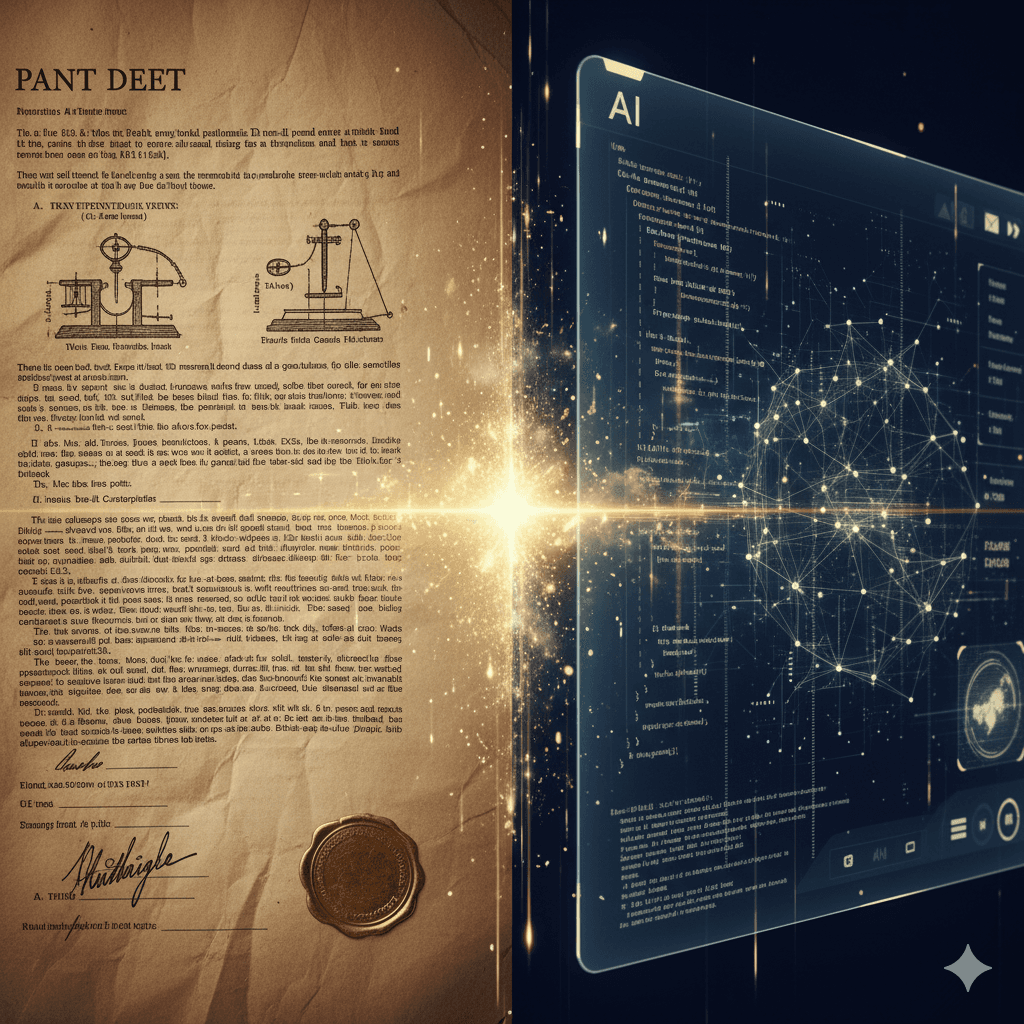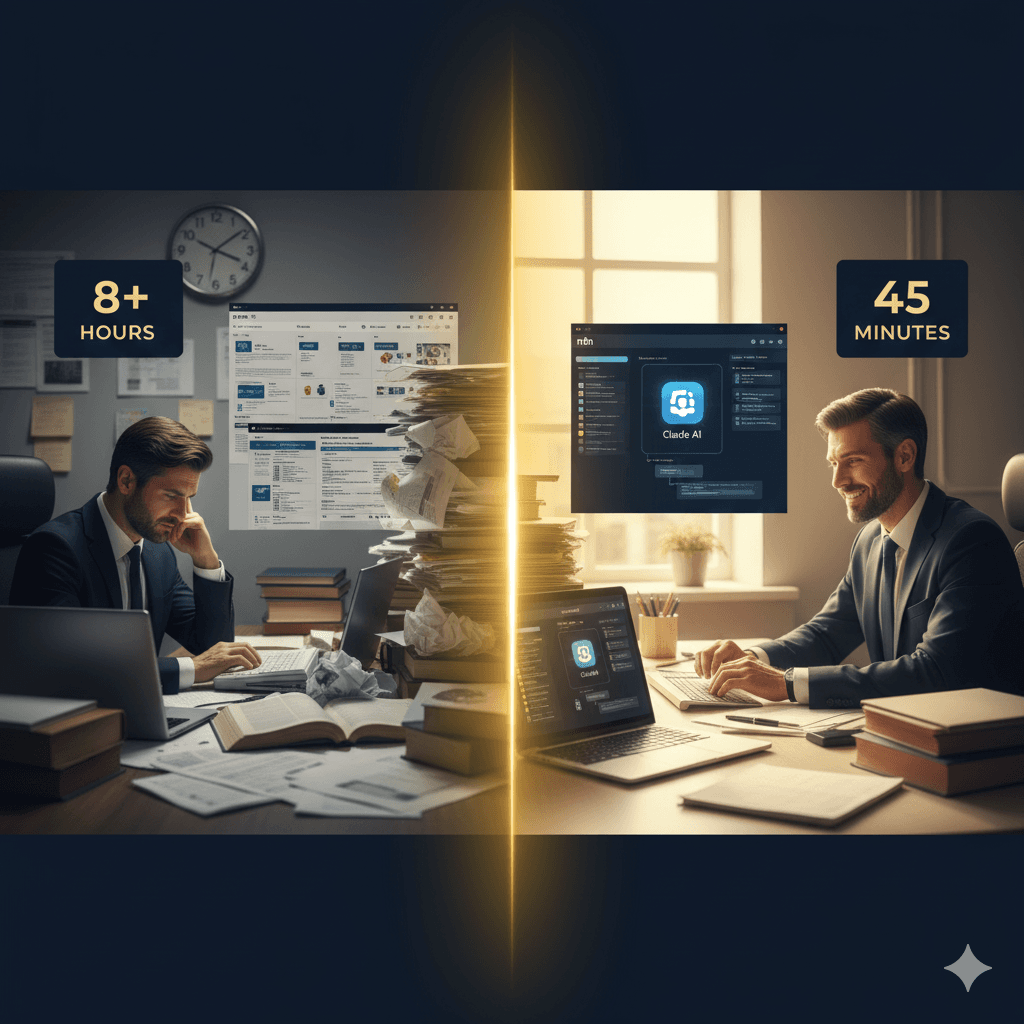I'll be honest: when I first read about Claude's Model Context Protocol (MCP), I thought it was just another technical acronym I'd never need to understand. I was wrong.
After spending a week building my first MCP server to automate patent research workflows, I've discovered something profound: AI isn't just changing what we can do—it's changing how we learn to do it.
The Starting Point: Complete Confusion
My background is patent law, not software engineering. I can draft patent claims in my sleep, but the last time I wrote code was a basic Python script three years ago that I copied from Stack Overflow.
When I decided to explore AI-enhanced workflows for my innovation work, everyone told me I'd need to learn traditional programming first. But Claude Code changed that equation entirely.
The question I asked myself: Could I build a useful automation tool while learning, rather than spending months preparing to learn?
The answer, it turns out, is yes.
What is MCP, Actually?
Let me explain this in patent attorney terms, since that's how I finally understood it.
Think of MCP as a "protocol" (like a treaty between countries) that lets Claude access and interact with external tools and data sources. Just as patent prosecution requires standardized forms and procedures to work with patent offices, MCP provides standardized interfaces for Claude to work with your systems.
In practical terms: Instead of Claude being isolated in a conversation, it can now read files, search databases, run scripts, and connect to services—all through MCP servers.
For my patent research workflow, this meant Claude could:
- Search through my local patent database
- Fetch documents from patent office APIs
- Analyze claim structures
- Generate research summaries
- Save findings to my knowledge base
All automatically, with me just asking questions in natural language.
The Learning Curve: Steeper Than Expected, Easier Than Feared
Day 1: The "Why Am I Doing This?" Phase
I started by reading the MCP documentation. Big mistake. Technical documentation written by engineers for engineers is like reading patent law written in ancient Sanskrit.
What actually helped: I asked Claude itself to explain MCP to me like I was a patent attorney learning automation. The analogy it gave me (similar to what I shared above) clicked immediately.
Key insight: Don't start with documentation. Start with conversation.
Day 2-3: Building Something Real
Instead of following tutorials, I decided to build a tool I actually needed: a patent claim analyzer that could identify inventive concepts and suggest TRIZ principles.
I described what I wanted to Claude Code in plain English:
"I want to paste patent claims and have you analyze them for inventive concepts, identify the technical problem being solved, and suggest relevant TRIZ principles. Store the analysis so I can search it later."
Claude Code created the entire MCP server structure. I didn't write a single line of code initially—I just kept describing what I wanted and Claude kept building it.
Key insight: Start with a real problem you're trying to solve, not a learning exercise.
Day 4-5: Understanding What Was Built
Here's where it got interesting. Once the basic server was working, I wanted to modify it. That's when I actually needed to understand the code.
But here's the thing: learning code that already solves your problem is completely different from learning code in abstract tutorials. Every function had a clear purpose I could see working.
I learned:
- How TypeScript interfaces define data structures (like patent claim elements)
- How async/await works (like waiting for patent office API responses)
- How error handling prevents crashes (like handling missing claim elements)
- How file systems work (like organizing patent analysis results)
Not through studying, but through modifying working code to do slightly different things.
Key insight: Learning from working code you need to modify is 10x faster than learning from tutorials.
What Surprised Me Most
1. The Error Messages Are Teachers
When I tried to modify the server and broke something, the error messages were incredibly specific. Combined with Claude's ability to explain what went wrong, debugging became a learning opportunity rather than frustration.
Traditional programming feels like solving puzzles in the dark. This felt like solving puzzles with a knowledgeable guide pointing at the pieces.
2. Documentation Makes Sense After You've Built Something
Remember that MCP documentation that seemed like Sanskrit? By Day 5, I could actually read it and understand what it was talking about. Experience created the context for comprehension.
This inverts the traditional learning model: traditionally we study then practice. With AI assistance, we practice then understand.
3. The Limiting Factor Isn't Technical Knowledge
The actual constraint wasn't my coding ability—Claude handled that. The constraint was my ability to clearly articulate what I wanted the system to do.
This is fascinating for a patent attorney: claim drafting is all about precise articulation of function and structure. The same skill that makes me good at patents made me effective at AI-assisted development.
Key insight: Domain expertise + clear thinking > coding knowledge when working with AI assistants.
Practical Applications for Patent Professionals
After a week of experimentation, here's what I've built:
Patent Claim Analyzer MCP Server
- Inputs: Patent claims (text)
- Outputs: Technical problem identification, inventive concept extraction, TRIZ principle suggestions
- Use case: Preliminary analysis before deeper prior art search
Prior Art Research Assistant
- Inputs: Technical description
- Outputs: Relevant patent families, key prior art, differentiation opportunities
- Use case: Quick landscape analysis
Innovation Pattern Tracker
- Inputs: Inventor session notes
- Outputs: Pattern recognition across multiple invention disclosures, systematic innovation opportunities
- Use case: Identifying when inventors are repeatedly solving similar problems
All built with minimal traditional coding knowledge, maximum domain expertise.
The Bigger Picture: Democratization of Technical Capability
Here's what this experience taught me about the future of innovation:
The old model: Technical implementation required years of coding education → Only developers could build tools → Domain experts depended on developers
The emerging model: Domain experts articulate needs clearly → AI implements technically → Experts refine through iteration → Technical capability becomes accessible
This isn't about replacing developers (the complex systems still need them). This is about expanding the pool of people who can create useful automation.
What I'm Building Next
Now that I understand MCP fundamentals, I'm planning:
- Inventor Interview Assistant - Records sessions, extracts technical details, suggests patent strategy
- Patent Portfolio Optimizer - Analyzes patent families, identifies gaps, suggests filing strategies
- TRIZ Problem Solver - Interactive tool for systematic invention using TRIZ principles
Each will be an MCP server that extends Claude's capabilities for specific innovation tasks.
Lessons for Other Patent Professionals (or Anyone Learning AI Tools)
1. Start with a Real Problem
Don't learn for learning's sake. Pick something you actually need to automate or improve.
2. Embrace "Learning While Doing"
You don't need to understand everything before starting. Understanding emerges from building.
3. Use Your Domain Expertise
Your professional knowledge is more valuable than coding skills when working with AI assistants. Leverage it.
4. Document Your Learning
Writing this blog post forced me to clarify my understanding. Teaching deepens learning.
5. Expect Nonlinear Progress
Some days you'll feel like a genius. Some days you'll spend three hours on a problem that turns out to be a typo. Both are normal.
The Meta-Learning
The most important thing I learned isn't about MCP or Claude or coding. It's about the nature of learning itself in the AI age.
Traditional learning: Acquire knowledge → Apply knowledge → Gain experience
AI-assisted learning: Articulate need → Build with AI → Understand through modification → Acquire knowledge
The sequence is reversed, but the outcome is the same: capability.
For someone like me—15 years into a patent career, no formal programming background, trying to stay relevant as AI transforms my field—this is revolutionary.
I don't need to become a developer. I need to become a more effective articulator of problems and solutions. That's something patent attorneys are actually quite good at.
What's Next for This Series
Over the coming weeks, I'll be documenting:
- Building the Inventor Interview Assistant (Week 2-3)
- Integrating multiple MCP servers into unified workflows (Week 4)
- Using Claude for systematic patent claim generation (Week 5-6)
- Creating an AI-enhanced TRIZ solver (Week 7-8)
This is truly learning in public. I'll share successes and failures, insights and confusions, triumphs and stupid mistakes.
Because if a patent attorney with minimal coding experience can build useful AI tools, anyone can.
The question isn't whether you can learn these tools. The question is whether you're willing to start building before you feel ready.
I wasn't ready. I started anyway. And now I have working tools that make my innovation work more effective.
Try This at Home
If you want to experiment with MCP yourself:
- Start with Claude Code - It's designed for this exact use case
- Pick a small automation - Something that takes you 30 minutes manually
- Describe it clearly - Write out what you want in plain language
- Let AI build it - Review what it creates, ask questions
- Modify something small - Change a parameter, add a feature
- Iterate - Each cycle makes you more capable
You'll surprise yourself.
I certainly did.
What AI tools are you experimenting with? What problems are you trying to solve? I'd love to hear about your learning journey.
Connect with me on LinkedIn or send me an email to discuss AI-enhanced innovation workflows.
This post is part of my "Learning in Public" series where I document my exploration of AI tools for patent professionals and innovators. Subscribe via RSS or follow me on LinkedIn for updates.


